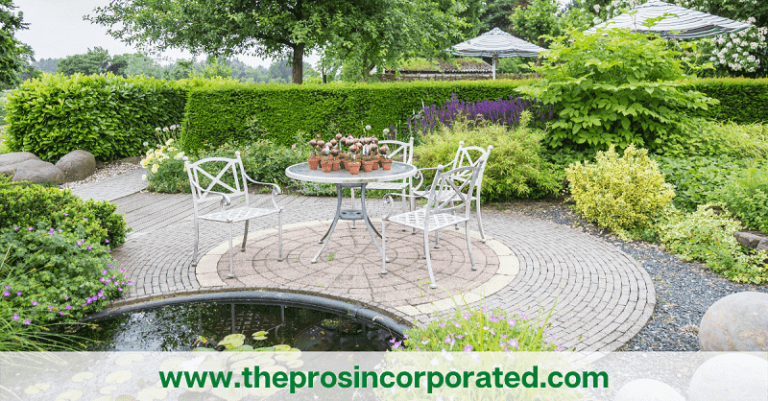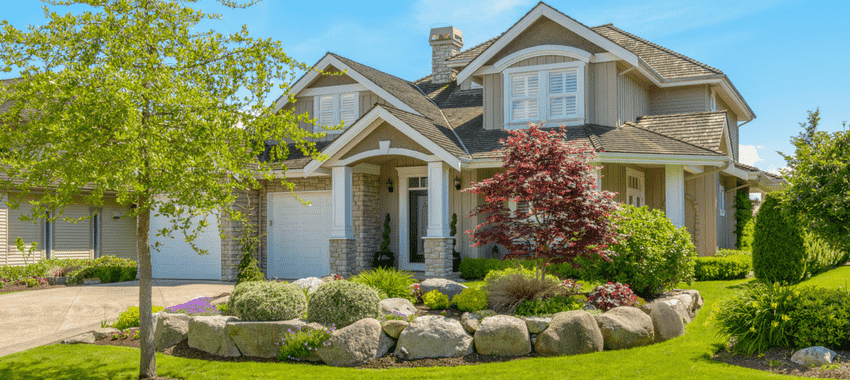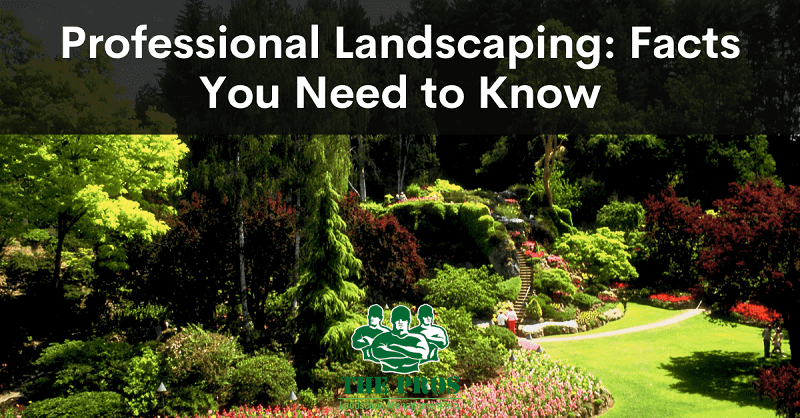To better understand how landscapes are designed, the two main elements of outdoor space are known as hardscapes and landscape. The easiest way to remember the difference: Hardscapes and landscape are the exact opposite, but both are required for the landscape to work perfectly. Both terms are often used to emphasize the difference between the two.
There are various factors that affect the design of the outdoor space and the overall atmosphere. Some add softness and vitality to the garden, while others add hardscape and landscape structures. Both, when properly designed and implemented, can create the perfect space to relax, entertain and enjoy the outdoors with friends and family.
[button id=”” style=”filled” class=”” align=”” link=”https://theprosincorporated.com/#services” linkTarget=”_self” bgColor=”accent1″ hover_color=”accent1″ font=”20″ icon=”” icon_placement=”left” icon_color=””]CONTACT US TODAY[/button]
Hardscape vs Landscape: What You Need to Know
But what do those terms mean? Understanding the difference between the two can help and visualize landscape architects’ ideas, helping and encouraging you to create your own designs. You can even do it. It also helps you know and understand how to properly care for your new space once it is complete.
What is Hardscape?
Simply put, Hardscape is one of his non-living elements in landscape design. As the name implies, these are the tougher design elements in space, such as concrete, rock, brick, pavement, stone, and wood. Hardscapes also include patios, pergolas, or man-made structures specifically used for landscaping.
What is Landscape?
Landscapes are all “soft” or creatures in a design, such as grass, plants, trees, and flowers. With the right use of these elements, your space will quickly turn into a quiet and relaxing oasis.
As you can see, it’s very easy to understand the difference between the two. However, a little care must be taken to make them work in harmony in the design.
Why do I need Hardscaping?
Hardscaping the garden is not just about aesthetics. It serves its purpose and is very important for the overall functioning of the outdoor space. When planning and selecting hardscape materials, layouts, and designs, it is important to consider how they affect landscaping efficiency, flow, and appearance. Retaining walls and stone stairs and paths help flatten sloping and uneven terrain. It also helps improve drainage and minimize runoff in flood-prone areas. Materials such as stone, rock, and concrete dry the surrounding soil by absorbing heat from the sun. This will prevent accumulated water, over-watering, algae and mold, and unwanted pests. Fences and gates provide home privacy and protection. They define your site boundaries and isolate different areas of the garden that you want to use for other purposes.
Fluidity from the inside to the outside of the house:
When properly designed and implemented, Hardscape also provides fluidity from the inside to the outside of the house. Building an outdoor kitchen, deck, or patio creates and provides outdoor equipment that is comparable to an indoor space. Outdoor space greatly expands the use of outdoor space in cold weather. Having something easy to use will allow you and your family to spend more time outdoors and will be a great place to welcome and entertain guests.
Hardscape Design Tips
- Many homeowners enjoy matching the surface of the home with the exterior of the home. This allows the two environments to seamlessly flow into each other. For example, if you have stones outside your house, try incorporating them into your hardscape.
- Hardscapes should always feel like they have a purpose. Create a focus to catch the viewer’s attention during the design process. However, please note that there are places where you can rest your eyes on the way. This is a great opportunity to take advantage of the soft features of landscaping.
- If there are too many straight lines, the landscape can feel unnatural and out of place. You need to feel real as if it wasn’t planned while maintaining its visual appeal. Use curved and rounded edges in your designs to break things down and bring creativity to your outdoor space.
- Think about how your design affects the garden in your garden. You don’t want the landscape to be flooded or deprived of water because of the hardscape design. Retaining walls and stone steps can dramatically improve the drainage of your garden. Use the material to solve the problem, considering where it may be constantly filled with water or not even getting enough water.
- If not properly constructed, the natural expansion and contraction of the Earth can completely destroy the pavement. Plan your move or move in advance. Always place the hardscape below the frost line to avoid widespread damage to the material.
Remember to use greens and shrubs whenever possible. Excessive pavement and lack of landscaping can make your space feel cold and unwelcome. Combining landscaping and hardscape makes it feel like it belongs to it and is part of the outdoor environment.
Hardscape Maintenance Suggestions
Hardscapes require much less maintenance than landscaping. However, exposure to weather and seasonal changes can adversely affect these surfaces. For this reason, precautions and regular maintenance can be very helpful in the life of the Hardscape material. Adding protective sealant to the surface of hardscapes such as wood fences helps prevent cracks, chips, and other related damage. Reapplying stains and sealants will help refresh the appearance of the exterior material. By filling the cracks between the pavements, weeds that can cause further damage and moisture that widens the gaps can be prevented.
Hardscape Cleaning Tips
Take the time to clean up unwanted spills and clutter to prevent dirt and make your outdoor furniture look even more beautiful. Also, unwanted growth, such as mold and mold, not only stains the hardscape but also makes it slippery and unsightly. Removing them can keep your family safe and save the lives of hardscape materials. When cleaning your hardscape, be aware of the tools and cleaners you use. Wire brushes and sturdy scrapers can cause scratches and dents on many of the surfaces. A high-pressure washer is effective for thoroughly cleaning the surface of cobblestones and concrete, but it can damage composite decks and wood. Pay attention to how you clean and treat the paved surface.
By using landscaping and hardscaping together in an outdoor space, you can create a visually pleasing experience around your home. If you know the differences, how to use them correctly and efficiently, and how to make them work in harmony, you can easily create the perfect space you dreamed of.
[button id=”” style=”filled” class=”” align=”” link=”https://theprosincorporated.com/#contact-us” linkTarget=”_self” bgColor=”accent1″ hover_color=”accent1″ font=”20″ icon=”” icon_placement=”left” icon_color=””]Contact Us Now To Get Quote!
[/button]

Best Lynn, MA Hardscape & Landscape Company
The Pros Landscape Management Inc.
North Shore
29 Hanover Street, Lynn Ma, 01902
Weekdays: 8:00am – 5:00pm
Saturday: 9:00am – 3:00pm
Sunday: Closed
Tel #: 857-574-4380
Visit




